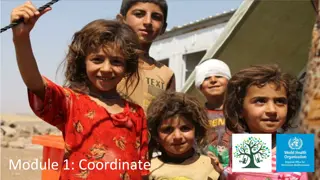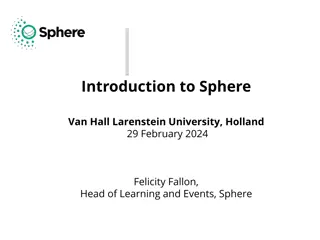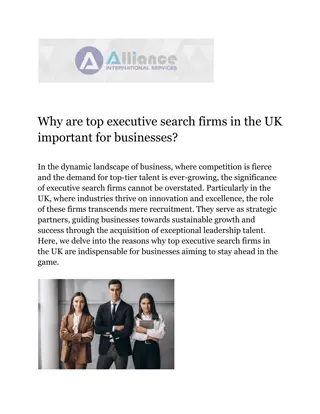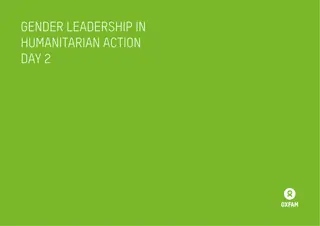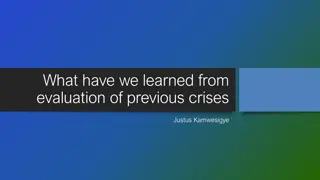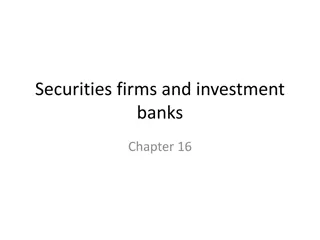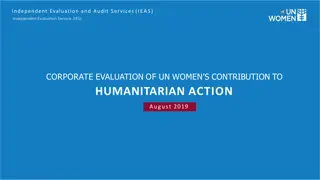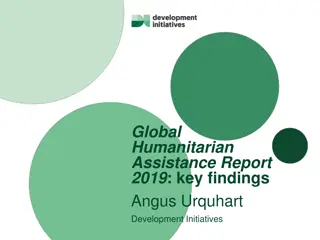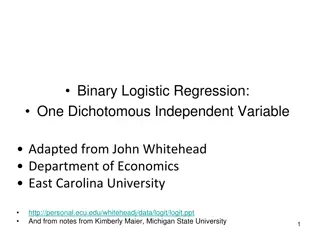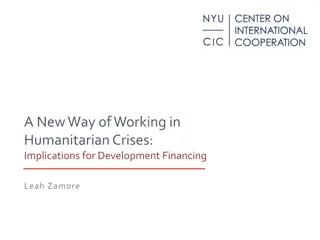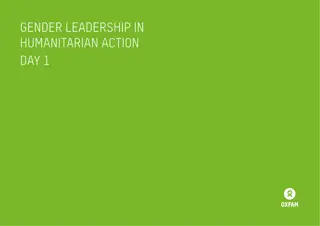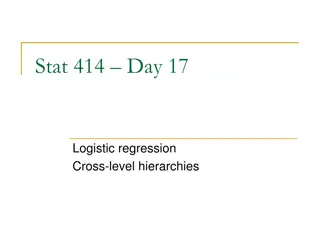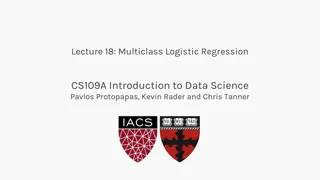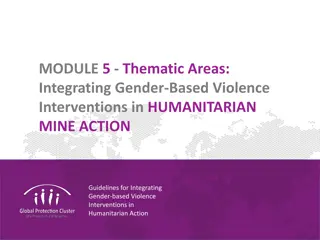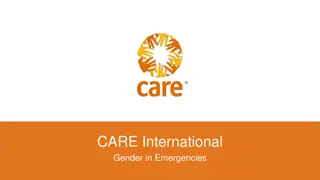Humanitarian Transformation of Logistic Firms in Emergency Situations
This research explores how logistic firms evolve into humanitarian entities in response to grand challenges like natural disasters and refugee crises. Case studies and data collection methodologies are utilized to understand the transformation process, as seen in examples such as SOS Mediterrane and the response to Hurricane IRMA. The personal motivations, decision-making criteria, challenges faced, and the significance of these transformations are examined, shedding light on the potential for businesses to temporarily shift towards humanitarian efforts under extreme circumstances.
Download Presentation

Please find below an Image/Link to download the presentation.
The content on the website is provided AS IS for your information and personal use only. It may not be sold, licensed, or shared on other websites without obtaining consent from the author. Download presentation by click this link. If you encounter any issues during the download, it is possible that the publisher has removed the file from their server.
E N D
Presentation Transcript
A Humanitarian Transformation of (Logistic) Firms under Emergency Situations Ali Kazeminia, Ph.D. 25Nov., 2021 Freie Universit t Berlin 1, Ali Kazeminia, Ph.D. (C)
Research Question Literature on Grand Challenges (Eisenhardt et al. 2016)! Catastrophes (natural disasters, hurricanes, global warming, climate changes, etc. ) Refugee escaping (e.g. SOS Mediterrane), Hurricane (as natural disasters: IRMA), etc. The significance of the events, how many people have been involved/rescued?, etc. RQ: How do (logistics) firms transform into humanitarian ones (in respond to grand challenges)? 2. Ali Kazeminia, Ph.D.(C); 25th, Nov., 2021
Methodology Case study Data collection: Archival data, documentaries, etc. Transcribed: partly coded (open, & theory-driven coding), preliminary results Looking for various patterns 3. Ali Kazeminia, Ph.D.(C); 25th, Nov., 2021
SOS Mediterrane Captain Klaus Vogel! Left his job as a merchant navy, chartered a ship to save the lives of refugees (from Libya)! > Initiation in 2014! He and his crew saved over 80,000 lives (very significant/extreme) in the Mediterranean sea! > Search and rescue! [Tous Sont Vivant!] Personal Background, Individual-driver (personal motivation to become a humanitarian entity by Captain Klaus Vogel > as a part of professional job responsibility) Decision making criteria: How should we work? (e.g., We can rescue everyone , or Not everyone's life can be saved! ) Challenges: Finding a rescue ship, authorities who were in support or against the act, positive transformation of the involved people Money comes from donation! 4, Ali Kazeminia, Ph.D.(C); 25th, Nov., 2021
Hurricane IRMA Business drivers (CEOs, leaders) > in response to Hurricane IRMA 2017 Collective > Several airlines saved the lives of habitants in the hurricane area (very significant/extreme) in the South of the US seas! Business motivation to temporary becoming a humanitarian entity > professional business responsibility, saving the lives of passenger base, etc. Decision making criteria: already booked passengers (their current flights) Challenges: replanning flights (various waiver programs!), shareholder considerations and justifications, authorities who were in support of the act (getting into an emergency mode), positive transformation of the involved people (airports) Benefiting from the current base, removing flight/seat-shift costs (as a form of humanitarian payment), temporarily lowering the margin of revenue in short-term (eliminating punishment costs), increase in the number of flights as a return (in both short- and long-term), etc. 5. Ali Kazeminia, Ph.D.(C); 25th, Nov., 2021
Results Low Set-up Cost (Temporary Transformations for humanitarian purposes) Airlines: Rescuing their passengers and people [Having new experience that can increase the level of preparedness for the following similar occasions] [Though, how much mounting activities (incl. temporary mounting) can take time?] > Already close to [located at] those places requiring humanitarian aids! Very-Low-frequency: major events for which there is need for major changes in planning but with high impact that should be noted! High Set-up Costs (Permanent or long-term transformation for humanitarian purposes) [Unless in the case of costly trade-offs], the full transformation of working positions [Controlling for the initial scale of the business]. It occurs in the case of small businesses starting from low assets [compared to the current activities before transformation]. Support from other humanitarian organizations. Usually prior experience and knowledge of founders supports for developing the humanitarian business (relevant transformation, it contains changing the context of activity from commercial to permanently humanitarian purposes) High-frequency: the practice continues in long-term 6, Ali Kazeminia, Ph.D.(C); 25th, Nov., 2021
Emergency Organizations Born-emergency: organizations that are established/formed as or for emergency situations from scratch! (emergency and planned formation) They are formed for emergency situations from scratch! (Individually oriented approach: expert founders, chaotic formation: cyclonic form) e.g. Red-Cross essentially is an organization developed for emergency situations) [public, national, or international organizations], (whether any collective form is required, etc.) Transformed-into-emergency: commercial organizations with the possibility of allocating their resources for emergency situations. (Humanitarian/Business-oriented and regulatory organizations, etc.), Decision makers at top/CEOs, planners at the top of hierarchy. Regulations for such shifts! 7, Ali Kazeminia, Ph.D.(C); 25th, Nov., 2021
Ind. Model Small Born-Emergency (Permanent) (Permanent) Large (Temporary) Transformed-Emergency Collective Individual 8, Ali Kazeminia, Ph.D.(C); 25th, Nov., 2021




